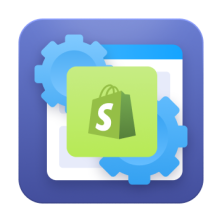Finding new ways to boost your e-commerce business is crucial to achieving long-term success. Blogging on Shopify is an increasingly popular option businesses use to grow their online presence and visibility and tap into new customer bases.
Effective blogging can positively affect your e-commerce organization, from helping you rank higher in search engine results to reaching your target audience and selling more products. But is Shopify good for blogging, can you blog on Shopify, and what separates one store’s Shopify blogging success from the best Shopify blogs? Read on to learn everything about blogging on Shopify to enhance your online success.
Benefits of Shopify Blogging
Running a blog can be demanding work – however, in most cases, the effort is worth the reward. Using Shopify for blogging article posts has many advantages, making it a worthwhile practice to enhance your e-commerce business.
Below are some of the core benefits of Shopify blogging to consider:
Improved SEO Rankings
The first benefit of posting a blog on Shopify is that these blogs can significantly improve the search engine optimization (SEO) efforts and rankings for your entire e-commerce website. Shopify blogs also encourage customers to spend more time on your website, reducing your current bounce rate and showing the value of your content to search engines. Blog posts optimized with the best keywords ensure your content stays relevant and searchable – increasing e-commerce success.
Increased Traffic to Your Website
By improving your rankings in search engines, Shopify blogging drives increased traffic to your web store. By making your content more visible and relevant to your target audience, you encourage more people to visit your website and engage with your products, increasing the likelihood of making sales.
New Customer Bases
While you might have your target audience in mind, there are always ways to improve your reach and tap into new audiences. Shopify blogging is an easy way to achieve this objective and find new customers interested in your brand.
When people are looking for a specific product, they’ll search for relevant keywords that can be found in your blog posts – and if you link to products, you help customers become more familiar with your offerings.
Boosted Sales
An online store blog is one of the easiest ways to convince a possible customer to move forward with a sale, and with the proper blogging strategies, you can watch your company’s revenue increase significantly. You increase the likelihood of attracting sales by providing links to your products within your Shopify e-commerce blog and outlining the benefits of your offerings in the text.
Increased Brand Authority
You don’t just want to seem like you have the same knowledge as everyone else in your industry – you want to stand out as a leader in your niche. Becoming a Shopify blogger is an excellent way to achieve this goal, as knowledgeable blog posts increase your brand authority and instill trust in potential customers. When you post a blog on Shopify, you show your expertise, which customers seek in any company they purchase from.
Evaluating Shopify’s Effectiveness for Blogging: FAQ
So, how effective is a Shopify retail blog? Is the effort it takes to create a high-quality Shopify blog post worth the results? Let’s answer some of your common questions about blogging on Shopify.
Is Shopify Good for Blogging?
Yes, Shopify is absolutely good for blogging, Shopify’s e-commerce platform is built for companies to post a variety of offerings and content, and blog posts are no exception. Your Shopify store is the perfect place to begin an e-commerce blog that connects with potential customers.
Do Shopify Blogs Really Help SEO?
Shopify blogs have an incredible potential to enhance your SEO efforts, making them a great solution to increase your online visibility. The fact is, Shopify blogging is more effective at attracting customers and boosting SEO efforts than relying solely on product and landing pages, making these posts necessary to expand your reach.
Is Blogging on Shopify Easy?
Yes, blogging on Shopify can be incredibly easy if you know how to create blogs that connect with readers. However, many people need guidance on creating a Shopify blog post and optimizing content to rank high in search engines. The guide below will help you out by outlining how to add a blog to Shopify.
How Can I Add a Blog to My Shopify Store?
Now that you know the benefits of Shopify blogs, it’s time to get into the main event: learning how to add a blog to Shopify. You can start blogging on Shopify in the following steps:
- From the Shopify admin page, select Online Store > Blog Posts.
- Select the Manage Blogs option.
- Choose Add Blog Post.
- Start working on your blog. Enter a title in the Title Field, and place your main content in the Content Field.
- From the Organization section and the blog drop-down menu, select Create a New Blog.
- Select Save.
Congrats, you’ve just created your first blog!
3 Great Shopify Blog Examples
Understanding the importance and potential of Shopify blogging requires analysis of specific Shopify e-commerce blog examples.
For Fitness: Gymshark

Gymshark is an emerging fitness retail brand – and one of the best Shopify blog options on the market. Their blog, known as “Gymshark Central,” has many helpful articles dedicated to helping people achieve fitness goals while connecting this information to relevant Gymshark products that can enhance the user’s fitness journey. The Gymshark blog boasts a clean layout and a simple user interface to help customers seamlessly navigate the website.
For Technology: OWC

OWC is a Shopify website offering refurbished iPhones, Macs, and other Apple devices. The site also has a blog that provides relevant tech advice for users: from completing data backups to news updates about new and emerging Apple technologies. OWC implements a simple, easy-to-navigate design so users can find what they want and explore the site’s offerings.
For Photography: Path

Path is a photo editing platform that provides e-commerce businesses with edits for product photos. The website’s blog focuses on various topics related to photo editing and how retouching product photos can maximize sales. The site also provides Photoshop tutorials for brands who edit product photos individually. Path’s blog maintains a simple layout and allows users to filter posts based on various topics, promoting a better user experience.
Know other Shopify blog examples of some of the best Shopify blogs available? Share them in the comment section.
Best Practices for E-commerce Blogging on Shopify
Many people use Shopify AI extensions to enhance their blog content, improve customer service, and promote a more functional website. However, this isn’t the only best practice for e-commerce blogging on Shopify. Consider AI strategies for Shopify to take your blog to the next level.
Balance Product Promotion With Valuable Content
One of the main goals when you add a blog to Shopify stores is to promote your products. However, this promotion might be unsuccessful if you don’t balance product promotion with helpful content connecting with audiences.
While you can add links to your products within your blog posts, focus on creating posts that have value to customers and answer some of their most pressing questions. By showing that you care about the content your customers consume, you build a trusting relationship between your brand and its customers, increasing sales.
Utilize Shopify for Effective Storytelling and Brand-Building
The main advantage of having a blog is that it gives you an outlet to tell your brand’s story – something that goes a long way in connecting with customers. When creating your Shopify blogs, take the opportunity to craft stories that address the audience’s pain points and provide actionable solutions to fix their problems. This process creates content that’s far more compelling than standard landing pages and product descriptions.
Follow SEO Tips for Shopify Blogs
SEO can make or break your blogging success. When crafting your Shopify blogs, keep the following tips in mind:
- Perform thorough keyword research to understand what words you should target.
- Optimize your title tags with relevant keywords.
- Include relevant product descriptions with your top keywords.
- Use engaging meta descriptions that include your target keywords.
- Structure your content with clear H1, H2, H3, and H4 header tags.
- Use descriptive file names for images and include alt text.
- Use internal and external page links throughout your blog content to build authority.
- Compress images to a recommended size, use browser caching, and consider other practices to optimize your site speed.
Craft Compelling Posts That Resonate
Ultimately, the key to any successful Shopify blog is having compelling content that resonates with your target audience. Keep your content relevant to your core offerings and tell a story with your blogs. You can also consider using some of the best blog apps for Shopify to create innovative content, like the ChatGPT AI Content Master extension, capable of creating compelling product descriptions, SEO-optimized titles, and relevant blog posts to reach your core audience.
ChatGPT AI Content Master
Harness the power of ChatGPT to enhance your Shopify blogging initiatives!
Try Amasty’s AI Extension, Tailored to Shopify
- Generate descriptions that sell.
- Craft captivating content for blog and outreach.
- Create SEO-friendly metadata.
















